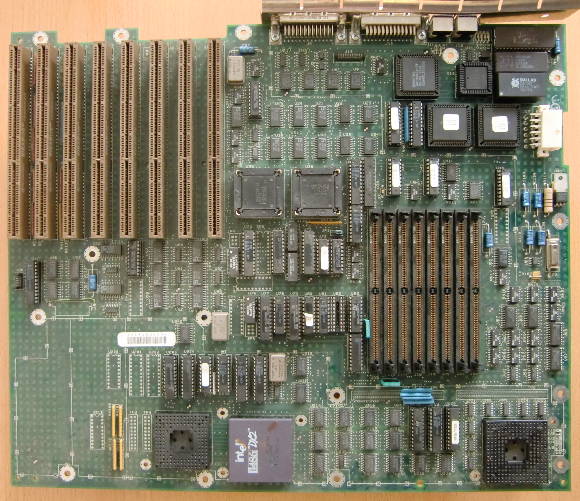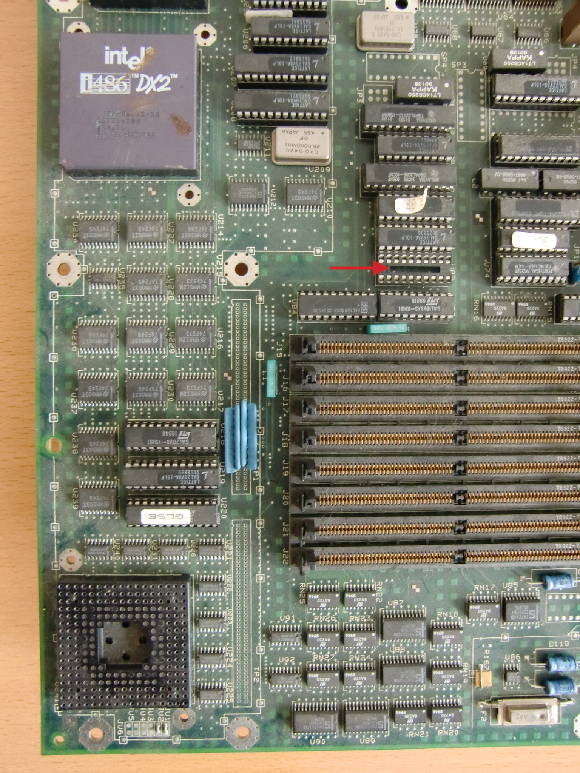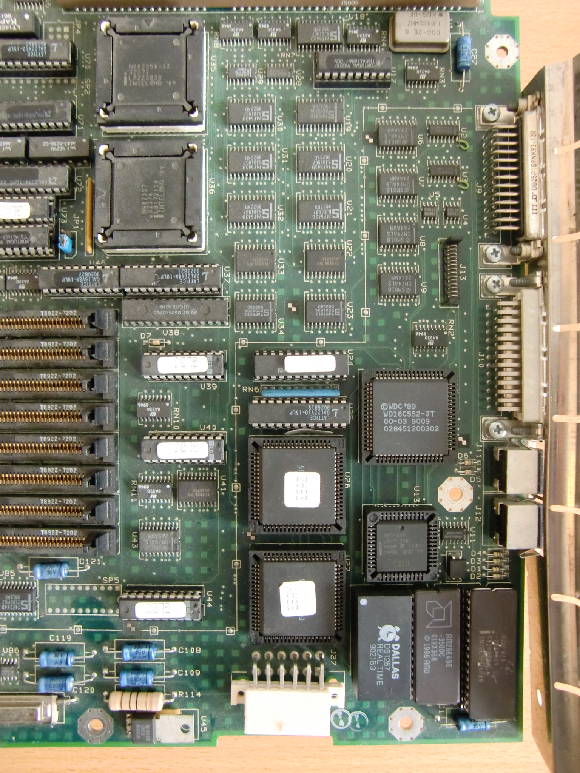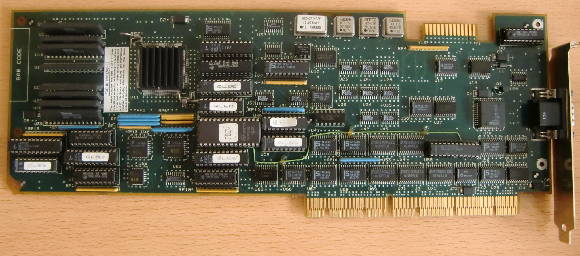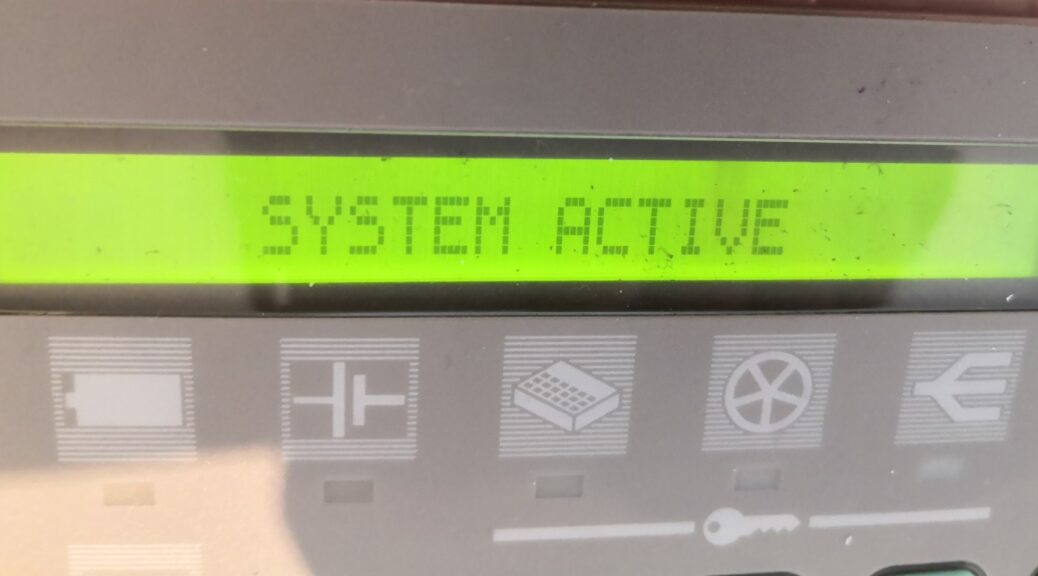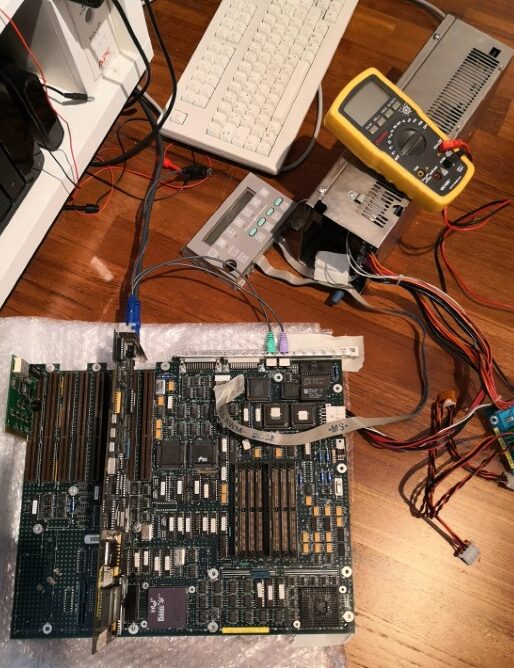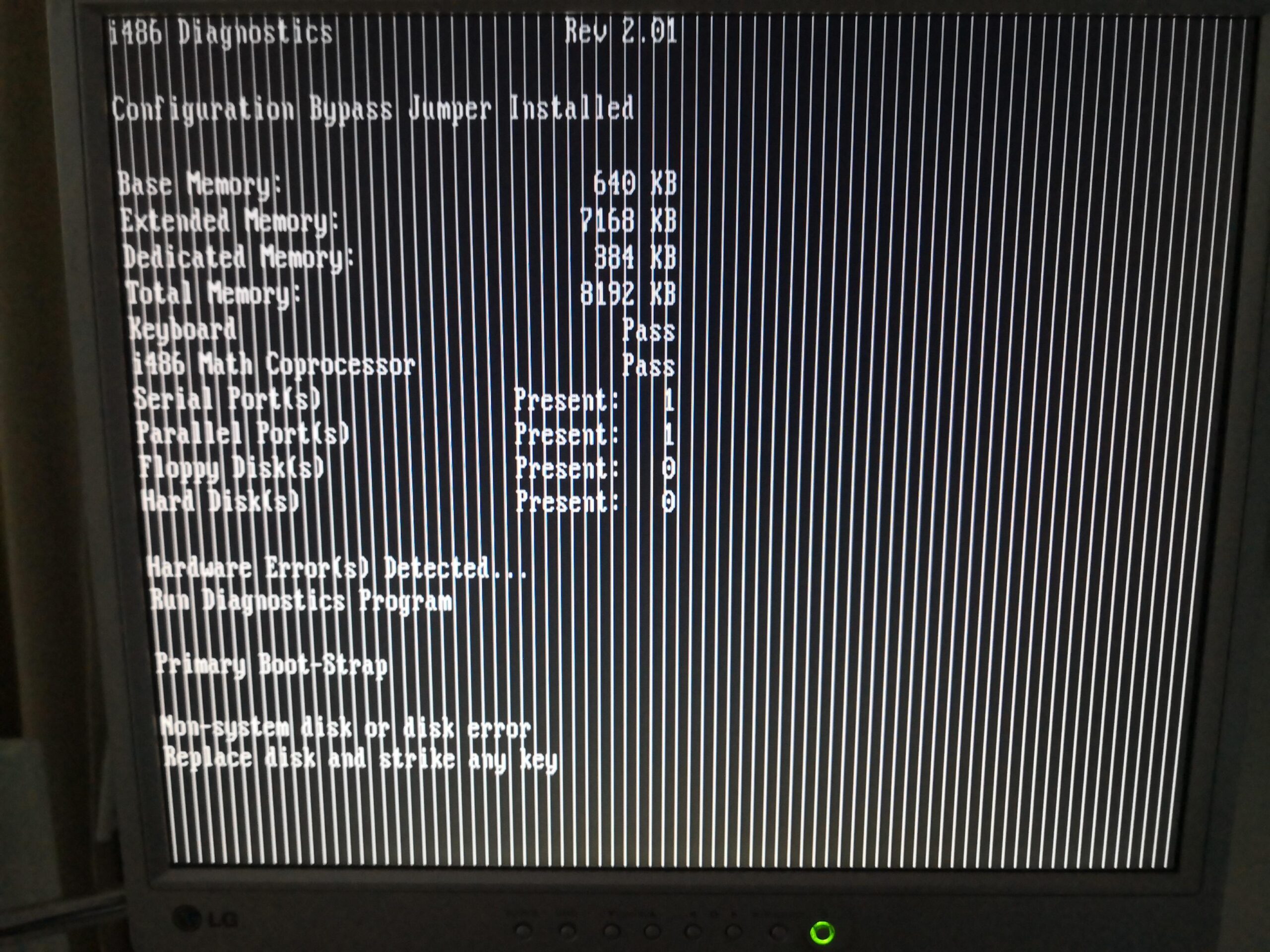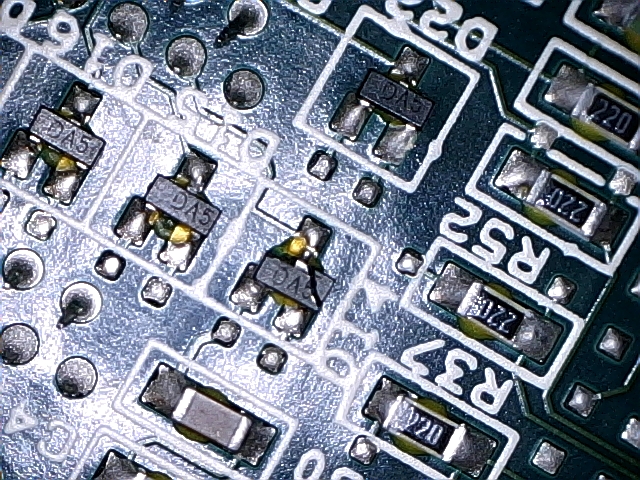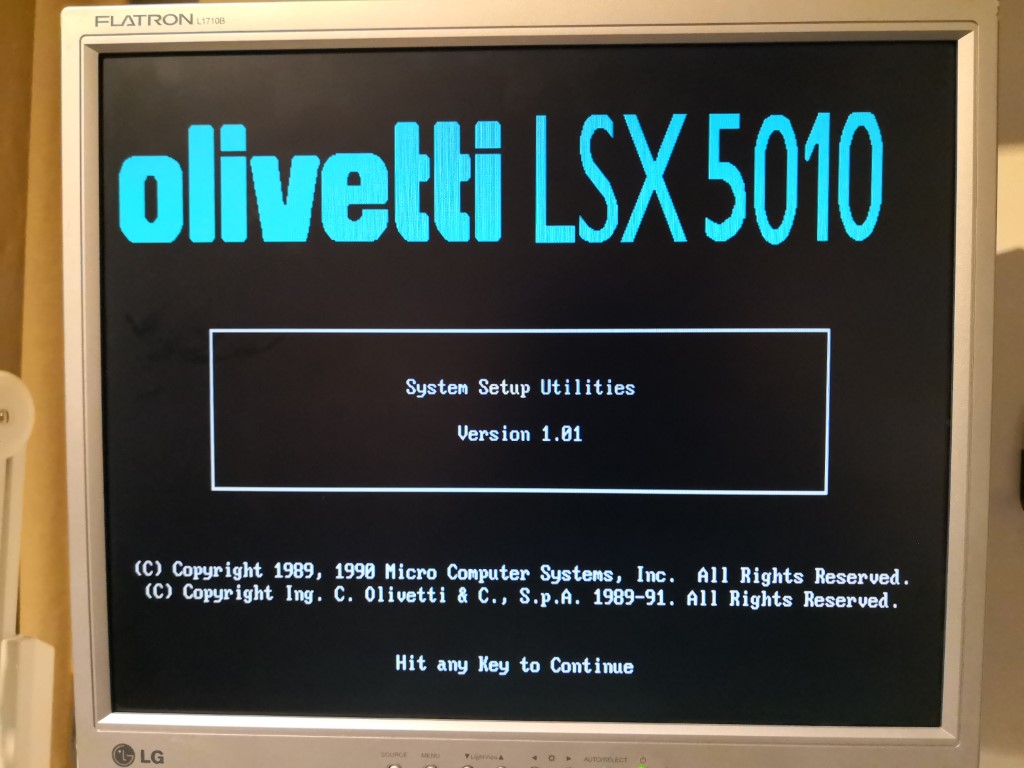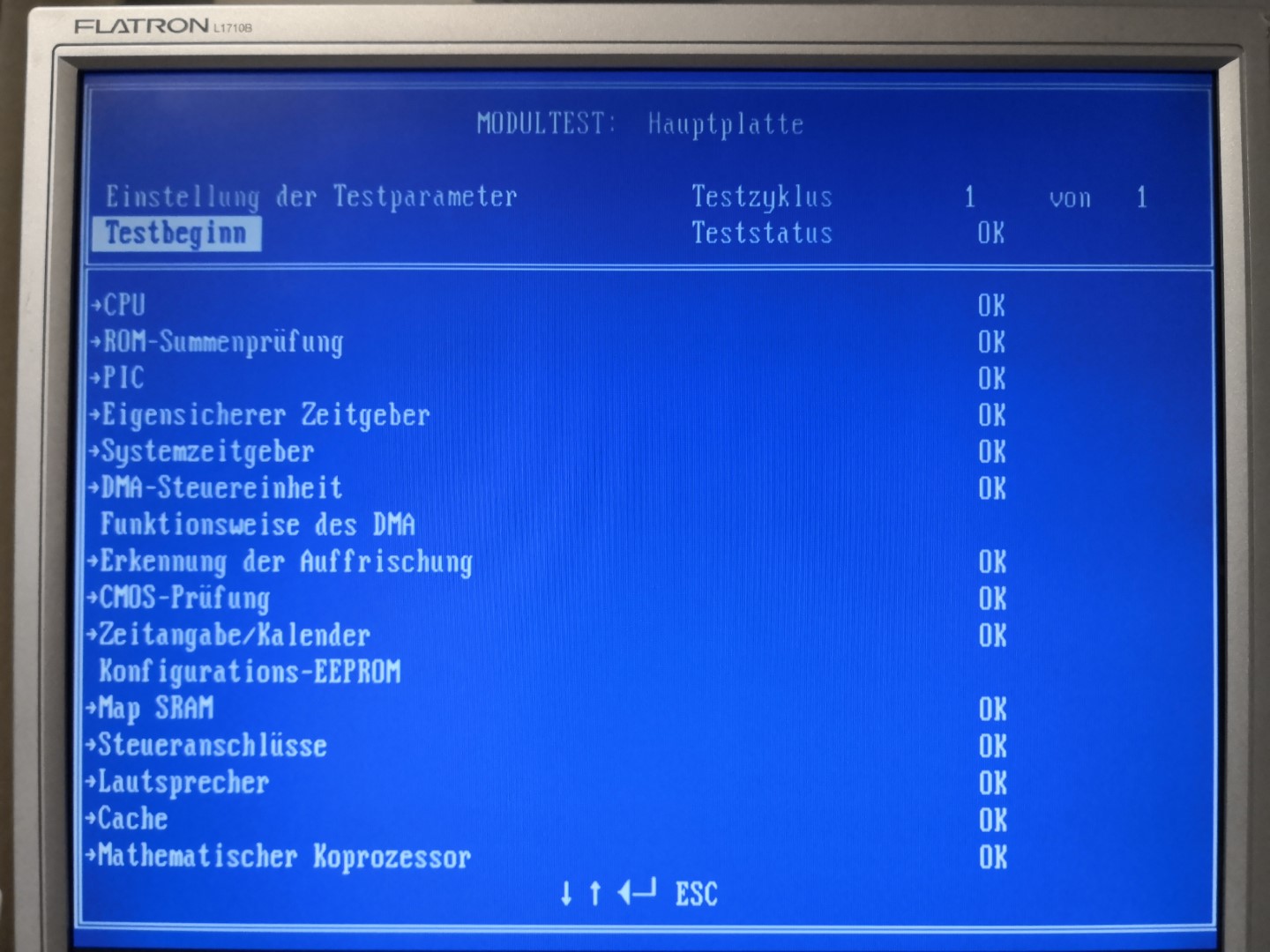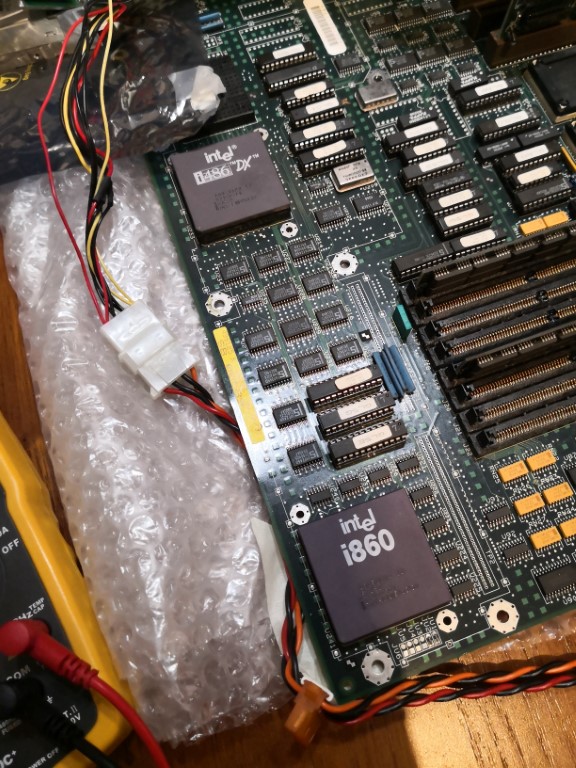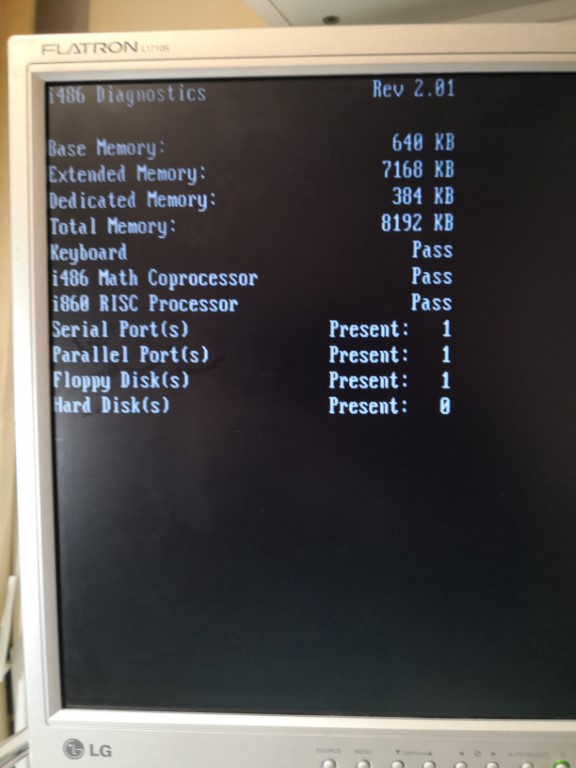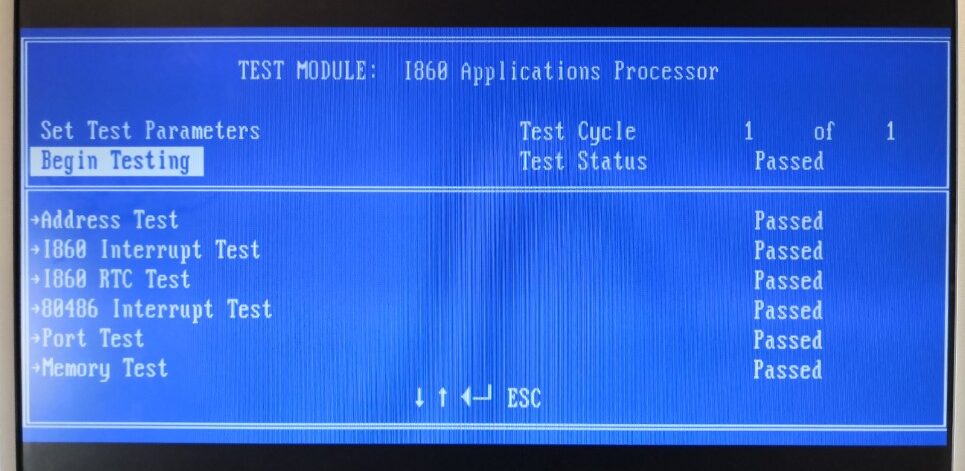The Olivetti CP486 was “the other” machine on the market which provided an 80486 and an 80860 on the same mainboard. The same board was used in Olivetti machines called LSX-5010 (25MHz) or LSX-5020(33MHz).
Like the Hauppauge 4860, it was an EISA bus system too, had no 2nd level cache but an extra socket for a Weitek 4167 FPU. Again very similar is the use of an huge array of PALs and GALs… and huge is the keyword for its size: 40,5 cm x 34 cm (16″ x 13.4″)!
My CP486 which I’m showing here seemed to have been through very though conditions. It was quite dirty and is of course not working :-/ Mainly due to a missing PAL, I guess (shown in the following picture).
So here’s the lower part of the board (90° tilted for better reading):
At the top the i486, in this case an DX2/50 I had lying around – nicely fitting the 25MHz oscillator to the right of it. At the edge of the photo you can see a bit of another socket. That’s where the optional Weitek FPU would have go (See the picture of the total view).
Next you’ll spot the many PALs around it. And a wild mixture it is! All PALs/GALs on the board are from different manufacturers, years and kinds. Some still featuring labels, most of them peeling off. According to the only documentation I was able to find, “in field” upgrades seemed to happen quite often. The little red arrow indicates the missing PAL at “U82” I talked about before. It should be a 16R4 containing the snoop-control, a vital part of the memory management. Without it, the board is pretty much brain-dead 🙁
Next are 8 slots for PS/2 SIMMs… depending on the BIOS version up to 64MB RAM were usable.
In the low left corner is what made this board special: The i860 socket. The 3 PALs above it are his address decoders… nothing is known about how the two processors shared the RAM.
Which leads us to the other half of the board:
This part is mainly chip-set stuff. At the top left there are the Intel 82358 EBC and 82537 ISP (See my Knowledge-Base article for more info) ICs.
The rest of the action is squeezing into the lower right corner: On top the WD16C552 Serial and Parallel Port Controller. The other two bigger PLCC ICs are EP1800 CPLDs supposedly working as I/O controllers. To their right is a 8742AH handling the PS/2 keyboard and mouse.
Below that there’s the inevitable DALLAS clockchip, a 64kbit EEPROM (probably EISA config) and a 1Mbit 28F010 Flash EPROM for the BIOS. Pretty modern stuff actually.
Naturally I read out the BIOS… it’s completely Olivetti propriety as they always did back in those days (Download available at the end of this page).
Last but not least, the power connector. Again, propriety but I do have the original power supply. Nice big paper weight.
The EVC-1
Like the Hauppauge 4860 (again), the CP486 also offered a special Graphics Card which enabled the i860 to directly write into its video memory, so it could be used as an accelerator.
While Hauppauge went the way of offering a special dedicated slot, Olivetti designed a special EISA Video Card… well, the EVC-1.
While it features a standard EISA slot connector, it does not work in other EISA systems (You get the BIOS boot messages but it then hangs with wire-do chars displayed).
It’s core is a Chips & Technologies 82C452, a mediocre VGA chip. Olivetti attached this DRAM VGA controller to 1MB dual-ported DRAM… This totally makes sense because the 82C452 can act as a simple VGA controller while the i860 will als be able to write to the screen (via EISA DMA) for example doing the heavy lifting graphics stuff. The idea is the same as Hauppauges Framebuffer but enhanced with a VGA controller.
That said, IMHO 1MB video memory is a bit less for such a professional approach.
Conclusion
So, here‘s the CP486 PDF-document I was able to find in the WWW including my BIOS dump.
If you happen to own a CP486/LSX50x0 I would be happy to hear from you!
Final anecdote: I’m not sure this guy (German forum, Google-Translate will most likely help) knew what he was doing when scavenging a complete, fine running LSX-5020 for a boring case-modding stunt. In a few years he will kick his ass for killing a one-of-a-kind machine for a boring mass-market PC.
That’s the same sin many Americans did to their vintage Ferraris when they replaced the somewhat complicated original engine with an off the shelf Ford V8 to make it reliable… and reduced its value to 10%. Sin! Sin I said!

